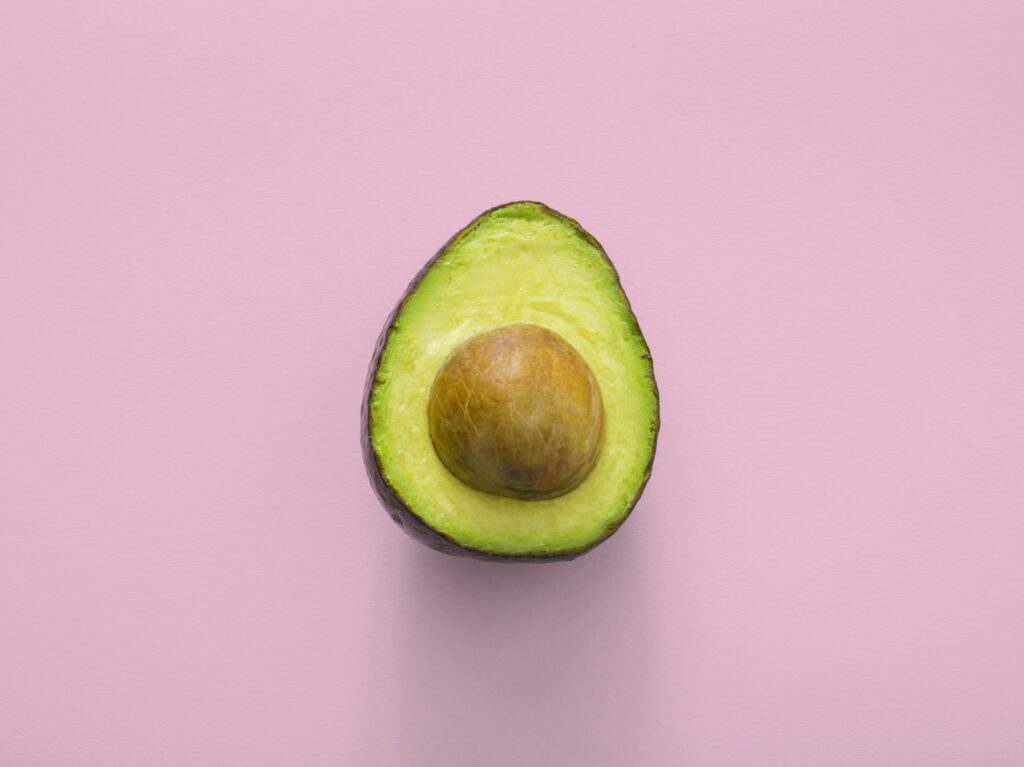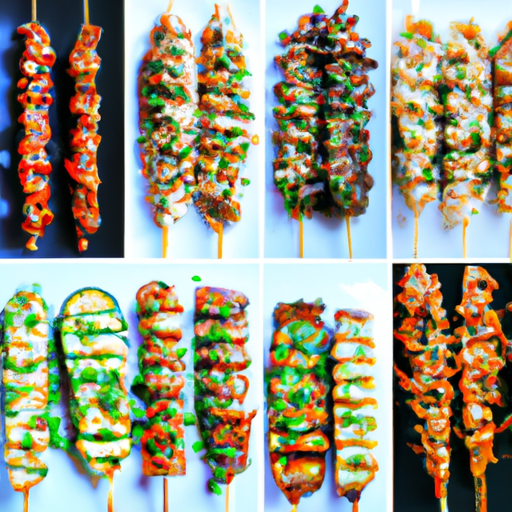In this article, you’ll discover some delicious yakitori recipes that will surely satisfy your foodie soul. We’ll discuss various mouthwatering dishes that you can easily prepare at home. Whether you’re a fan of chicken, beef, or vegetables, we’ve got you covered with different options to try. Get ready to tantalize your taste buds and explore the wonderful world of yakitori!
Delicious Yakitori Recipes to Satisfy Your Foodie Soul

Introduction
Are you a foodie who loves to explore different cuisines and flavors? If so, then yakitori should definitely be on your list of must-try dishes. This traditional Japanese street food has gained immense popularity around the world for its delicious flavors and simplicity. In this article, we will take a closer look at yakitori, its ingredients, cooking techniques, and some mouth-watering recipes that will leave you craving for more.
What is Yakitori?
Yakitori is a Japanese dish that consists of skewered and grilled chicken pieces. The word “yakitori” can be broken down into two parts – “yaki” which means grilled and “tori” which means bird or chicken. As the name suggests, the main ingredient of yakitori is chicken, but it can also include other meats and vegetables. It is often served as a snack or as a main course with rice or noodles.
Definition of Yakitori
Yakitori refers to skewered and grilled chicken that is seasoned and cooked to perfection. The chicken is usually cut into small pieces and skewered on bamboo sticks, contributing to its unique presentation. The skewers are then grilled over high heat, resulting in juicy and tender chicken with a slightly charred flavor.
Origin of Yakitori
Yakitori has its roots in Japan and has been a popular street food for centuries. It is believed to have originated during the Edo period (1603-1868) when street vendors started grilling chicken pieces on skewers and selling them to hungry passersby. Over time, yakitori evolved and became a staple in Japanese cuisine, with various regional variations and unique cooking techniques.
Yakitori Ingredients
To make the perfect yakitori, you need a few key ingredients that contribute to its distinct flavors. Let’s take a closer look at the main components of this delectable dish.
Chicken
Chicken is the star ingredient of yakitori and plays a crucial role in determining its taste and texture. The most commonly used parts of the chicken for yakitori are the thigh meat, breast meat, and chicken wings. Each cut provides a different texture and flavor, allowing you to create a variety of yakitori skewers.
Sauce
The sauce used to marinate the chicken and baste it while grilling is another essential element of yakitori. The traditional yakitori sauce, known as tare, is a combination of soy sauce, mirin (sweet rice wine), sake (Japanese rice wine), sugar, garlic, and ginger. The tare adds a rich and savory flavor to the chicken, complementing its natural taste.
Vegetables and Herbs
While chicken is the primary protein in yakitori, vegetables and herbs are often added to enhance the flavors and provide a balanced meal. Common vegetables used in yakitori include green onions, mushrooms, bell peppers, and cherry tomatoes. Herbs such as shiso leaves or cilantro can also be added for an extra burst of freshness.
Types of Yakitori
Yakitori offers a wide range of options to cater to different tastes and preferences. Here are some popular types of yakitori that you should definitely try.
Tsukune (Chicken Meatballs)
Tsukune yakitori is made from ground chicken meat mixed with various seasonings like soy sauce, ginger, garlic, and green onions. The mixture is shaped into small meatballs that are skewered and grilled until juicy and golden brown. Tsukune yakitori is often served with a raw egg yolk for dipping, adding a creamy and rich element to the dish.
Negima (Chicken and Leek)
Negima yakitori consists of alternating pieces of chicken and leek on a skewer. The combination of tender chicken and slightly charred leek creates a delicious contrast of flavors. The leek becomes soft and sweet when grilled, adding a unique twist to the traditional yakitori.
Momo (Chicken Thigh)
Momo yakitori is made from chicken thigh meat, which is known for its juiciness and tenderness. The thigh meat is grilled until it is slightly charred on the outside while remaining succulent on the inside. Momo yakitori is a classic choice and is loved for its robust flavor and moist texture.
Toriwasa (Chicken Sashimi)
Toriwasa yakitori is a unique variation that features rare or lightly seared chicken breast, resembling sashimi. The chicken breast is sliced into thin strips, marinated in soy sauce and mirin, and then briefly seared or left raw. Toriwasa yakitori offers a delicate and melt-in-your-mouth experience, similar to sushi.

Yakitori Cooking Techniques
To achieve the perfect yakitori, specific cooking techniques are essential. Here are the key techniques used to create this delectable dish.
Grilling
Grilling is the primary cooking method for yakitori, and it requires high heat to achieve the desired texture and flavors. The skewered chicken is placed over hot charcoal or a grill, and it is crucial to maintain continuous heat to ensure even cooking. The grilling process imparts a smoky and slightly charred flavor to the chicken, enhancing its overall taste.
Marinating
Marinating the chicken in a flavorful sauce is a crucial step in making yakitori. The marinade adds depth of flavor, tenderizes the meat, and allows the chicken to absorb the seasonings. The chicken is typically marinated for a few hours or overnight, depending on the desired intensity of flavor.
Skewering
Skewering the ingredients is a vital technique in yakitori preparation. Bamboo skewers are commonly used for their natural and heat-resistant properties. The chicken pieces and vegetables are carefully threaded onto the skewers, ensuring that they cook evenly and remain secure during grilling.
Basting
Basting is the process of brushing the chicken with the yakitori sauce or tare while it is being grilled. This step adds an additional layer of flavor to the chicken and helps to keep it moist and juicy. Basting is typically done multiple times during the grilling process, allowing the sauce to caramelize and create a luscious glaze.
Steps to Make Yakitori
Now that we have covered the essential techniques and ingredients, let’s walk through the step-by-step process of making yakitori.
Preparation
Start by preparing your ingredients. Cut the chicken into bite-sized pieces and chop any vegetables or herbs that you will be using. Soak the bamboo skewers in water for about 30 minutes to prevent them from burning during grilling.
Marination
In a bowl, combine the soy sauce, mirin, sake, sugar, garlic, and ginger to create the yakitori sauce or tare. Place the chicken pieces in a shallow dish or resealable bag and pour the sauce over them, ensuring that all the chicken is well-coated. Let it marinate in the refrigerator for at least 2 hours or overnight.
Skewering the Ingredients
Once the chicken is marinated, remove it from the dish or bag and pat it dry. Thread the chicken pieces onto the soaked bamboo skewers, alternating with any vegetables or herbs you are using. Ensure that the skewers are evenly loaded and leave a small gap between the ingredients for even cooking.
Grilling
Prepare your grill by heating charcoal until it is white-hot, or preheat a gas grill to high heat. Place the skewers directly over the heat source and grill for about 5-7 minutes per side, or until the chicken is cooked through and slightly charred. Rotate the skewers occasionally for even cooking.
Basting
During the last few minutes of grilling, start basting the chicken with the remaining yakitori sauce. Brush the sauce onto the skewers, making sure to coat all sides. Continue to grill for another minute or two, allowing the sauce to caramelize and create a glossy glaze.
Garnishing
Once the yakitori is cooked, remove it from the grill and let it rest for a few minutes. Garnish the skewers with a sprinkle of sesame seeds, chopped green onions, or any other toppings of your choice. Serve hot and enjoy the flavors of your homemade yakitori.

Variations and Fusion Recipes
While traditional yakitori is incredibly delicious, there are also variations and fusion recipes that you can explore for unique flavors. Here are a few ideas to get you started.
Vegetarian Yakitori
Vegetarian yakitori can be made by substituting the chicken with tofu, tempeh, or your favorite vegetables. Marinate the tofu or vegetables in a soy-based sauce and grill them using the same techniques as traditional yakitori. The result is a vegetarian-friendly dish that is packed with flavor.
Seafood Yakitori
For seafood lovers, seafood yakitori offers a delightful twist on the traditional recipe. Use shrimp, scallops, or fish as the main ingredient, and marinate them in a citrusy or soy-based sauce. Skewer the seafood and grill until cooked through. Seafood yakitori is a great choice for those looking for a lighter and refreshing option.
Teriyaki Yakitori
Teriyaki yakitori combines the sweet and savory flavors of teriyaki sauce with the grilling techniques of yakitori. Marinate the chicken in a homemade teriyaki glaze or use store-bought teriyaki sauce, and grill it to perfection. The result is a succulent and flavorful dish that is sure to satisfy your taste buds.
Yakitori Pizza
For a fusion recipe that combines Japanese and Italian flavors, try making yakitori pizza. Start with a pre-baked pizza crust and top it with grilled chicken skewers, vegetables, and a drizzle of yakitori sauce. Bake the pizza until the crust is crisp, and the flavors are well combined. The result is a unique and delicious dish that is perfect for sharing.
Accompaniments for Yakitori
Yakitori is often enjoyed with various accompaniments that complement its flavors and create a complete meal. Here are a few traditional choices to consider.
Traditional Dipping Sauces
Yakitori is typically served with a variety of dipping sauces that enhance the flavors of the grilled chicken. Tare sauce, which is the marinade used for grilling, can be used as a dipping sauce. Ponzu sauce, a tangy combination of citrus juice and soy sauce, is also a popular choice. Additionally, you can serve yakitori with a side of Japanese mayonnaise for a creamy and savory taste.
Pickled Vegetables
Pickled vegetables add a refreshing and tangy element to your yakitori meal. Japanese pickles, or tsukemono, are commonly served alongside the skewers. Options include pickled cucumber, daikon radish, or a mix of assorted vegetables. The pickles provide a contrast of flavors and textures, balancing out the richness of the yakitori.
Rice or Noodles
To make your yakitori meal more substantial, serve it with a side of steamed rice or noodles. The simple and neutral flavors of rice or soba noodles pair well with the bold flavors of the grilled chicken. You can also opt for yakitori donburi, which is a bowl of rice topped with yakitori skewers and a drizzle of tare sauce.

Tips and Tricks for Perfect Yakitori
To ensure that your yakitori turns out perfectly every time, here are some tips and tricks to keep in mind.
Choosing the Right Chicken Cuts
Selecting the right cuts of chicken is essential for achieving tender and juicy yakitori. Thigh meat is the most popular choice due to its higher fat content, which helps keep the chicken moist during grilling. If using breast meat, consider marinating it for a longer time to enhance its flavor and prevent drying out.
The Right Charcoal
When grilling yakitori, it is best to use binchotan charcoal or hardwood charcoal. These types of charcoal burn hotter and longer, giving you the ideal heat for grilling. Avoid using briquettes or lighter fluid as they can leave a chemical taste on the chicken.
Grilling Temperature and Time
Grilling yakitori requires high heat to cook the chicken quickly and achieve the desired charred exterior. Monitor the temperature of your grill and maintain it at around 400-450°F (204-232°C) for the best results. The cooking time will vary depending on the size and thickness of the chicken pieces, so keep a close eye on them to prevent overcooking.
Conclusion
Yakitori is a versatile and mouth-watering dish that offers a delightful combination of flavors and textures. From the tender and juicy chicken to the savory sauces and grilled vegetables, each element adds depth and complexity to this Japanese street food favorite. Whether you stick to the traditional recipes or venture into fusion creations, yakitori is sure to satisfy your foodie soul and leave you craving for more. So gather your ingredients, fire up the grill, and get ready to indulge in the deliciousness of yakitori.




